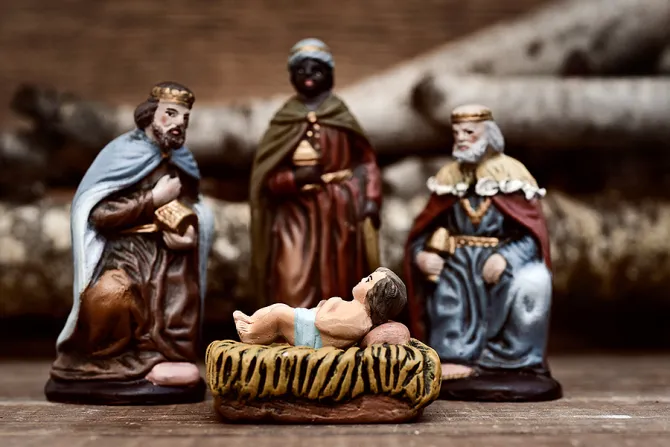The celebration of the visitation of the Magi — whom the Bible describes as learned wise men from the East — has developed its own distinct traditions throughout the Roman Church.
As part of the liturgy of the Epiphany, it is traditional to proclaim the date of Easter and other moveable feast days to the faithful — formally reminding the Church of the importance of Easter and the Resurrection to both the liturgical year and to the faith.
Other cultural traditions have also arisen around the feast. Theologian Dr. Matthew Bunson, vice president and editorial director of EWTN News, told CNA about the “rich cultural traditions” in Spain, France, Ireland, and elsewhere that form an integral part of the Christmas season for those cultures.
In Italy, La Befana brings sweets and presents to children not on Christmas but on Epiphany. Children in many parts of Latin America, the Philippines, Portugal, and Spain also receive their presents on “Three Kings Day.”
Meanwhile, in Ireland, Catholics celebrate “Women’s Christmas” — where women rest from housework and cleaning and celebrate together with a special meal. Epiphany in Poland is marked by taking chalk — along with gold, incense, and amber — to be blessed at Mass. Back at home, families will inscribe the first part of the year, followed by the letters, “C+M+B+” and then the last numbers of the year on top of every door in the house.
The letters, Bunson explained, stand for the names traditionally given to the Wise Men — Casper, Melchior, and Balthazar — as well as for the Latin phrase “Christus mansionem benedicat,” or “Christ, bless this house.”
In nearly every part of the world, Catholics celebrate Epiphany with a King Cake — a sweet cake that sometimes contains an object like a figurine, or a lone nut. In some locations, the lucky recipient of this prize either gets special treatment for the day or must hold a party at the close of the Epiphany season on Feb. 2.
These celebrations, Bunson said, point to the family-centered nature of the feast day and of its original connection to the celebration of the Holy Family. The traditions also point to what is known — and what is still mysterious — about the Magi, who were the first Gentiles to encounter Christ. While the Bible remains silent about the Wise Men’s actual names, as well as how many there were, we can say they were likely clever, wealthy, and most importantly, brave.
“They were willing to take the risk in order to go searching for the truth, in what they discerned was a monumental event,” he said, adding that the Magi can still be a powerful example.
Lastly, Bunson pointed to the gifts the Wise Men brought — frankincense, myrrh, and gold — as gifts that point not only to Christ’s divinity and his revelation to the Magi as the King of Kings but also to his crucifixion. In giving herbs traditionally used for burial, these gifts, he said, bring a theological “shadow, a sense of anticipation of what is to come.”
Revelation of God
(Story continues below)
Subscribe to our daily newsletter
Carnazzo explained to CNA the significance of the feast of the Theophany — and of Christ’s baptism more broadly — within the Eastern Catholic Churches.
“In our Christian understanding in the East, we are looking at creation through the eyes of God, not so much through the eyes of man,” Carnazzo said.
In the feast of the Baptism of the Lord, he continued, there is special divine significance.
With this feast day, the pastor explained, “God has come to reclaim us for himself.” Because of original sin, he continued, humanity has inherited “a human nature, which has been dislocated from its source of life.”
Sin also affected parts of creation, which has also been separated from its purpose and connection to God’s plan for life, Carrazzo said, because its original purpose is not just to sustain our bodies but our souls as well.
“With the fall, however, it has been dislocated from its source of life, it is under the dominion of death; it doesn’t have eternal life anymore. So God comes to take it to himself.”




